How Energy Supplements Help You Track and Understand Fatigue
🌙 Introduction: From Fighting Fatigue to Understanding It
We live in a culture obsessed with “beating fatigue.” Energy drinks, espresso shots, productivity hacks — all promise to keep you moving. But what if fatigue isn’t your enemy? What if it’s information?
Fatigue tells you what your body needs: rest, nutrients, oxygen, emotional regulation, or a different rhythm. Instead of masking tiredness, the goal is to decode it — to understand why it happens and how to support recovery sustainably.
That’s where energy supplements come in.
When used intentionally (not as stimulants but as feedback tools), they help you track your body’s patterns, identify where energy drops originate, and learn how to optimize physical and mental endurance — without burning out.
In this article, we’ll explore:
🔋 The biology of fatigue
🌿 Supplements that reveal what your energy system needs
🧘 Breathwork for real-time feedback
💬 Therapy and mindset tools for emotional fatigue tracking
Looking for supplements for Brain Fog? Click here.
🧬 Section 1: The Science of Fatigue
Fatigue is not simply “low battery.” It’s a complex feedback signal from multiple systems:
| System | Common Fatigue Type | Core Cause |
|---|---|---|
| 🔋 Mitochondrial | Physical exhaustion | Energy production slowdown |
| 🧠 Neurotransmitter | Mental fog, low motivation | Imbalanced dopamine, acetylcholine |
| ❤️ Hormonal/Adrenal | Afternoon crash, stress intolerance | Cortisol dysregulation |
| 💧 Electrolytic | Dizziness, poor endurance | Sodium, potassium, or magnesium loss |
| 😔 Emotional | Overwhelm, disconnection | Chronic stress or trauma load |
When you start tracking fatigue (journaling, wearable metrics, or supplement response logs), patterns emerge — showing which system is under strain.
⚙️ Section 2: How Energy Supplements Help You “Map” Fatigue
Energy supplements aren’t just boosters — they are diagnostic allies.
By noticing how you respond to different compounds, you can identify which energy systems are deficient or overloaded.
For example:
If B-vitamins restore focus, you may have methylation or adrenal issues.
If CoQ10 sharpens clarity, mitochondrial fatigue is likely.
If L-Tyrosine lifts motivation, dopamine reserves were depleted.
When tracked consistently, supplement feedback becomes biochemical journaling — helping you understand your body’s real energy story.
💊 Section 3: Core Supplements for Tracking and Understanding Fatigue

Here are ten evidence-backed nutrients and adaptogens that both support energy and reveal your fatigue patterns.
🌞 B-Complex Vitamins – The Metabolic Map
Why it matters:
B-vitamins drive the Krebs cycle, converting food into ATP (energy). Deficiency causes sluggish metabolism and mental burnout.
How it helps tracking:
If you feel mentally sharper within hours of taking a methylated B-complex, it means your energy bottleneck was in cellular metabolism — not sleep or willpower.
💊 Dose: 1 capsule daily with breakfast (methylated forms preferred).
⚡ CoQ10 – The Mitochondrial Messenger
Coenzyme Q10 lives inside every mitochondrion — the tiny powerhouses in your cells. It helps them make ATP efficiently.
How it helps tracking:
If CoQ10 boosts stamina or focus over several days, you’ve confirmed that mitochondrial fatigue was part of your low-energy picture.
💊 Dose: 100–200 mg/day (take with fat).
🧠 Combine with PQQ for deeper mitochondrial support.
🌿 Rhodiola Rosea – The Stress Filter
Rhodiola modulates your body’s stress response and cortisol curve. It helps maintain steady energy without spikes or crashes.
Tracking insight:
If you notice fewer afternoon slumps or emotional drops, fatigue was partly stress-driven (adrenal-related).
💊 Dose: 200–400 mg in the morning.
🔋 L-Carnitine – The Fat-to-Fuel Converter
Carnitine shuttles fatty acids into mitochondria. Without it, energy from fats stagnates.
Tracking insight:
If endurance improves and brain fog fades, your fatigue likely stemmed from metabolic inflexibility (poor fat oxidation).
💊 Dose: 500–1,500 mg/day, ideally before workouts or cognitively demanding work.
☀️ Magnesium – The Nervous System Reset
Magnesium powers over 300 reactions, including ATP synthesis. Low magnesium equals “tired but wired.”
Tracking insight:
If sleep and calm improve but daytime energy steadies, fatigue was neuromuscular or stress-driven, not just physical.
💊 Dose: 200–400 mg (glycinate or malate form).
💫 NAD+ Precursors (NMN or NR) – The Cellular Timekeepers
NAD+ fuels mitochondrial repair. With age and stress, levels drop — slowing recovery.
Tracking insight:
If NMN or NR improves alertness and endurance, your fatigue was linked to cellular aging or repair inefficiency.
💊 Dose: 250–500 mg morning.
🌺 Adaptogens (Ashwagandha, Eleuthero, Schisandra)
Adaptogens train your body to adapt to stress, balancing cortisol and immune energy.
Tracking insight:
Improved calm focus means your fatigue had a neuroendocrine (stress) component.
Persistent agitation despite rest means the HPA axis still needs balancing.
💊 Dose: 300–600 mg/day (root extracts).
🧠 L-Tyrosine – The Motivation Molecule
Tyrosine is the precursor to dopamine and norepinephrine — neurotransmitters for drive and alertness.
Tracking insight:
If you feel motivated and mentally sharp within an hour, your fatigue source was neurotransmitter depletion — often from chronic stress or overwork.
💊 Dose: 500–1,000 mg before demanding tasks.
🍄 Cordyceps Mushroom – The Oxygen Optimizer
Cordyceps enhances ATP production and oxygen uptake, especially under physical or cognitive load.
Tracking insight:
If breath capacity, stamina, or focus increase, fatigue involved oxygen metabolism or mitochondrial lag.
💊 Dose: 1–2 g/day extract (fruiting body).
🌿 Electrolytes – The Conductors of Energy
Sometimes, fatigue is dehydration in disguise. Sodium, potassium, and magnesium maintain electrical signaling in cells.
Tracking insight:
If you perk up within 15 minutes of electrolyte hydration, fatigue was circulatory or mineral-based, not adrenal or mental.
💧 Tip: Try 500–750 ml water with sea salt + lemon on waking.
Looking for supplements for Brain Fog? Click here.
🧭 Section 4: Tracking Fatigue Like a Scientist
Energy journaling transforms supplement use into biofeedback.
✍️ Keep a Fatigue Log
Each morning, note:
Hours of sleep
Mood upon waking
Supplements taken
Energy levels (1–10 scale)
Mental clarity
Craving patterns
Within weeks, you’ll see clear correlations — magnesium improves calm, Rhodiola smooths afternoons, CoQ10 lifts mornings, etc.
📱 Use Wearables
Track HRV (heart-rate variability), resting heart rate, and sleep stages.
A dip in HRV paired with low motivation = stress fatigue.
Normal HRV but muscle soreness = metabolic fatigue.
🧩 Integrate Nutrient Timing
Take stimulating compounds (Rhodiola, B-vitamins) early, and calming minerals (Magnesium, Ashwagandha) at night. Tracking helps you see how rhythm affects restoration.
🌬️ Section 5: Breathwork — The Fastest Fatigue Feedback Tool
Before reaching for caffeine, try breathing. Your respiration pattern mirrors your fatigue type.
| Breath Pattern | Likely Fatigue Type | Solution |
|---|---|---|
| Fast, shallow | Anxiety or stress fatigue | Box breathing (4-4-4-4) |
| Heavy sighing | Mental burnout | Coherent breathing (5-5) |
| Irregular | Blood sugar or adrenal imbalance | Alternate nostril breathing |
| Tight chest | Emotional fatigue | 4-7-8 breathing to calm vagus nerve |
When practiced daily, breathwork becomes real-time fatigue tracking — showing whether you need stimulation or relaxation.
🌄 Example Routine
Morning: 2 minutes of fast “energizing breath” (fire breathing or nasal power breaths).
Midday: 3 minutes of box breathing before lunch.
Evening: 5 rounds of 4-7-8 breathing with magnesium or tea.
By pairing breath awareness with supplements, you’ll know exactly which fatigue signals are chemical, emotional, or lifestyle-related.
Want to try Breathwork? Click Here.
💬 Section 6: Therapy for Emotional Fatigue Awareness

Not all exhaustion is physical. Emotional fatigue is often the hardest to identify because it hides behind productivity.
Therapeutic frameworks like ACT (Acceptance and Commitment Therapy) and CFT (Compassion-Focused Therapy) help you observe fatigue without judgment.
❤️ Acceptance and Commitment Therapy (ACT)
ACT teaches that energy fluctuates with your emotional investment. You can’t always control fatigue — but you can control how you relate to it.
💡 Tracking insight: If journaling reveals tiredness after emotional interactions, your fatigue pattern is relational, not biochemical.
💞 Compassion-Focused Therapy (CFT)
CFT replaces self-criticism (“I’m lazy for being tired”) with self-understanding.
This reduces cortisol and restores internal safety — vital for sustainable energy.
💬 Example mantra:
“My body isn’t failing me — it’s communicating with me.”
🧘 Mindfulness-Based Cognitive Therapy (MBCT)
Combines meditation and cognitive awareness to catch thought patterns fueling mental fatigue.
Tracking mental noise helps you distinguish mental tiredness (too much thought) from biochemical tiredness (not enough fuel).
Looking for online therapy ? Click Here.
🌿 Section 7: Nutrition Habits That Complement Energy Tracking
Supplements are most effective when your diet provides stable foundations.
🥦 Eat:
Leafy greens (magnesium, folate)
Fatty fish (omega-3s)
Eggs (choline, B-vitamins)
Pumpkin seeds (zinc, magnesium)
Berries and cacao (antioxidants)
🚫 Avoid:
Sugary energy drinks
Processed carbs before meditation or work
Excess caffeine after 2 p.m.
Your food choices determine how stable your energy baseline feels.
⚖️ Section 8: Reframing Energy — From “Boosting” to “Balancing”
Energy supplements shouldn’t override your natural fatigue signals — they should translate them.
When you understand why you’re tired, every choice becomes intelligent: sleep earlier, rehydrate, or nourish mitochondria.
This mindset shift transforms “energy management” into energy literacy.
You move from:
“How do I push harder?”
to
“What is my body trying to teach me?”
That’s the foundation of sustainable vitality.
🌟 Section 9: Sample Daily Fatigue-Awareness Routine
| Time | Habit | Purpose |
|---|---|---|
| 🕕 Morning | Electrolyte water + Rhodiola | Hydration + cortisol balance |
| 🕗 Mid-morning | CoQ10 + B-complex | Cellular activation |
| 🕛 Noon | Short walk + breathing check-in | Oxygen + nervous system reset |
| 🕓 Afternoon | L-Tyrosine + snack | Dopamine renewal |
| 🕗 Evening | Magnesium + journaling | Relaxation and fatigue reflection |
| 💤 Before bed | 4-7-8 breathing + gratitude note | Reset mindset and vagus tone |
Within a month, you’ll notice predictable fatigue patterns — and how each supplement interacts with your inner rhythm.
💡 Section 10: What “Energy Awareness” Feels Like
When your relationship with energy matures, you’ll experience:
⚖️ Stable energy instead of peaks and crashes
🧘 Calm alertness (flow state)
💬 Clear emotional feedback (“I’m overstimulated” vs. “I’m depleted”)
🔄 Consistent morning recovery
Instead of chasing stimulation, you learn the language of your energy systems — biochemical mindfulness in action.
🧠 Key Takeaways
✅ Fatigue is a signal, not a flaw.
✅ Energy supplements can help you identify which systems need attention.
✅ Breathwork and therapy offer real-time emotional feedback.
✅ Tracking responses to nutrients like CoQ10, magnesium, and adaptogens teaches you how your body speaks.
When you start listening, energy stops being mysterious — it becomes a conversation between biology, emotion, and awareness. 🌿
📚 References
Wallace, D. C. (2010). Mitochondrial energetics and fatigue. Biochimica et Biophysica Acta.
Benton, D., & Donohoe, R. T. (2008). Caffeine and L-Theanine on cognition and alertness. Nutritional Neuroscience, 11(4), 193–198.
Panossian, A., & Wikman, G. (2010). Effects of adaptogens on the stress system. Pharmaceuticals, 3(1), 188–224.
Kennedy, D. O. (2016). B vitamins and the brain: mechanisms and mood. Nutrients, 8(2), 68.
Satoh, T. et al. (2017). PQQ enhances mitochondrial biogenesis. Journal of Biological Chemistry, 291(8).
Hayes, S. C., et al. (2011). Acceptance and Commitment Therapy. Guilford Press.
Gilbert, P. (2014). Compassion-Focused Therapy. Routledge.
Nagendra, H. R., & Telles, S. (2010). Breathwork and neurophysiology. Int. J. Yoga, 3(1), 2–5.
Related Posts
-
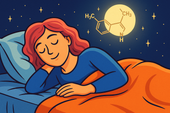
Melatonin and Menopause: Restoring Your Sleep Cycle
Nutrients are the foundation of hormone balance and energy. Learn how vitamins, minerals, and whole foods like greens, salmon, and berries nourish women’s bodies during menopause and beyond — restoring vitality, mood, and strength. 🌿🥗
-

How L-Theanine Helps With Menopausal Anxiety
Science continually deepens our understanding of the human body, from hormones to neurotransmitters. Discover how evidence-based research shapes modern wellness — bridging natural medicine, neuroscience, and hormone balance for healthier living. 🔬🌿
-

Can Ginkgo Biloba Improve Memory in Menopausal Women?
Hormone therapy can be a powerful tool for easing menopause symptoms and restoring balance. Learn how it works, the types available, and how to combine it safely with lifestyle and natural support for optimal well-being. 🌸💊
-

B Vitamins for Mental Clarity During Menopause
Nutrients are the foundation of mental and physical balance during menopause. Discover how vitamins, minerals, and whole foods like leafy greens, fish, nuts, and citrus can fuel energy, clarity, and calm while supporting hormonal health. 🌿✨
-

Mood Swings and Menopause: Natural Nutrient Support
Probiotics do more than support digestion — they help balance mood, hormones, and immunity too. Learn how a healthy gut microbiome can ease menopause symptoms, boost energy, and improve emotional resilience naturally. 🌿🦠
-

Brain Fog in Menopause: Supplements That May Help
Supplements can be powerful allies in restoring balance, energy, and focus—especially during menopause. Learn how nutrients like omega-3s, vitamin D, magnesium, and herbal adaptogens work together to support brain health, reduce stress, and promote lasting vitality. 🌿💊
-
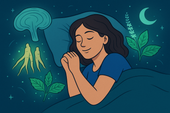
Adaptogen Stacks for Reducing Night Sweats
Hormone detox isn’t about cleansing your body—it’s about restoring flow. Learn how the liver, gut, and endocrine systems work together to eliminate hormone buildup and how herbs like milk thistle, dandelion, and schisandra support balance, clarity, and natural vitality. 🌿💫
-

Cooling Menopause Symptoms with Herbal Support
Ashwagandha is one of nature’s most powerful adaptogens, helping women manage stress, sleep better, and balance hormones naturally. Discover how this ancient root supports calm energy, emotional resilience, and relief from menopause-related anxiety and fatigue. 🌿💫
-

Evening Primrose Oil and Menopause: What the Research Says
Hot flashes are one of the most common—and frustrating—symptoms of menopause. Discover what causes them, why the body’s “internal thermostat” becomes unbalanced, and the natural supplements and lifestyle shifts that can help you cool down, rest better, and feel more in control. 🔥💧
-

How Black Cohosh Helps with Menopausal Symptoms
Sleep disturbances are among the most exhausting symptoms of menopause—but they don’t have to rule your nights. Discover how natural strategies and calming supplements can help you fall asleep faster, stay asleep longer, and wake up feeling truly restored. 🌙💤
-

Natural Supplements That May Reduce Hot Flashes
Hot flashes can disrupt sleep, confidence, and daily comfort—but natural relief is possible. Discover the best research-backed supplements like black cohosh, red clover, and licorice root that may reduce hot flashes, balance hormones, and restore inner calm during menopause. 🌿💫
-

Omega-3s and Menopause: Supporting Mood and Inflammation
Omega-3 fatty acids are essential for hormonal harmony, brain function, and emotional balance—especially during menopause. Learn how these healthy fats reduce inflammation, support heart health, and restore calm, vitality, and focus through every stage of midlife. 🌊💫
-

The Role of Vitamin D in Menopausal Health
Vitamin D plays a powerful role in menopausal health—supporting bone strength, hormone balance, and mood stability. Discover how optimizing your vitamin D levels can improve sleep, energy, and emotional well-being while protecting long-term vitality through every stage of menopause. 🌞💪
-

Magnesium for Menopause: Relaxation, Sleep, and Hormonal Support
Self-regulation is the art of staying calm, centered, and in control—no matter what life throws your way. Learn how to strengthen emotional balance, manage stress responses, and cultivate inner peace through mindful techniques that reconnect your heart, body, and brain. 🌿💫
-

Can Adaptogens Like Ashwagandha Ease Menopausal Symptoms?
Brain fog during menopause can make even simple tasks feel overwhelming—but you’re not losing your sharpness, your hormones are simply shifting. Discover how adaptogens like ashwagandha and key nutrients can restore mental clarity, balance cortisol, and bring calm focus back to your day. 🌿🧠
-

Supplements That Support Hormonal Balance During Menopause
Herbal supplements have supported women’s health for centuries—and modern science is finally catching up. From ashwagandha and maca to red clover and rhodiola, discover how nature’s most trusted herbs can calm stress, balance hormones, and enhance energy through every life stage. 🌿✨
-
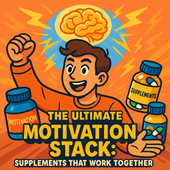
The Ultimate Motivation Stack: Supplements That Work Together
Discover how therapy helps restore motivation, focus, and emotional balance alongside supplement and mindset strategies. This empowering article explores how addressing thought patterns and emotional blocks through therapy can complement biochemical tools for long-term drive and well-being. 🧠💬
-

Entrepreneurial Drive: Can Supplements Help You Avoid Burnout?
Entrepreneurship demands energy, creativity, and mental resilience—but without balance, it leads to burnout. This in-depth article explores how nootropic supplements, adaptogens, and mindset tools can help entrepreneurs sustain motivation, manage stress, and keep their drive sharp for the long haul. 🚀💼
-

Supplements for Students: Staying Motivated Through Exams
Feeling burned out before finals? Discover how the right supplements can help students stay focused, calm, and motivated through exam season. This guide explores science-backed nutrients, brain-boosting herbs, and mindset tools that fuel clarity, memory, and stress resilience when it matters most. 🎓⚡
-
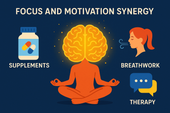
How Nootropic Stacks Can Enhance Drive and Focus Together
Discover how nootropic stacks can reignite both your drive and focus by balancing key neurotransmitters like dopamine and acetylcholine. This in-depth guide explores the science behind motivation, how supplements enhance cognitive performance, and how breathwork and therapy complete the picture for lasting mental clarity. 🧠✨
-
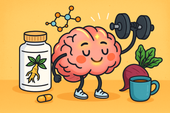
Natural Pre-Workout Supplements for Motivation and Mental Sharpness
Adaptogens are nature’s stress balancers 🌿 — powerful herbs like Ashwagandha, Rhodiola, and Holy Basil that help your body stay calm, focused, and resilient. By regulating cortisol and supporting energy balance, they boost motivation, endurance, and emotional stability — naturally. 🌞🧠
-
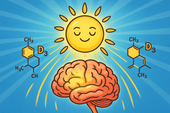
The Role of Vitamin D in Mental Drive and Ambition
Motivation is more than mindset — it’s energy in motion ⚡🧠. It comes from a balance of biology, emotion, and purpose. When your brain, body, and habits align, drive becomes effortless. Learn how to spark consistency, overcome dips, and build unstoppable momentum naturally. 🌿✨
-
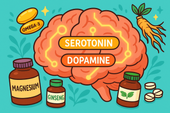
Serotonin, Dopamine, and Motivation: Can Supplements Really Help?
Ginseng is the ultimate vitality root 🌿⚡ — long praised for enhancing focus, energy, and motivation without the crash. By balancing stress hormones, boosting dopamine, and improving brain oxygenation, this adaptogenic powerhouse helps you feel clear, strong, and ready to take action. 🧠✨
-
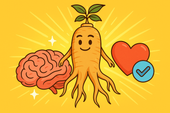
How Ginseng Helps Support Drive, Motivation, and Energy
Ginseng is nature’s endurance root 🌿⚡ — a timeless adaptogen that fuels focus, drive, and resilience from the inside out. By balancing cortisol, boosting dopamine, and supporting mitochondrial energy, ginseng helps you feel clear, strong, and steady — no crash, just sustainable vitality. 🧠✨
-
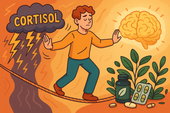
The Stress–Motivation Connection: Supplements That Balance Cortisol
Vitamin D — the “sunshine nutrient” ☀️ — plays a crucial role in mental health, motivation, and energy regulation. Low levels can lead to fatigue, low mood, and sluggish focus. Learn how sunlight, nutrition, and supplementation can restore your inner light and boost emotional balance naturally. 🌿🧠
-

When Low Mood Drains Your Drive: Natural Support Options
Vitamin D is more than the “sunshine vitamin” ☀️ — it’s a key player in mood, motivation, and overall brain health. Low levels can lead to fatigue, low drive, and seasonal sadness. Learn how sunlight, supplements, and nutrition can help restore balance and lift your emotional energy naturally. 🌿🧠
-

How Adaptogenic Herbs Help You Stay Consistent
Adaptogens are nature’s resilience enhancers 🌿. From Ashwagandha to Rhodiola and Holy Basil, these herbs help your body adapt to stress, balance cortisol, and maintain steady energy. Learn how they build inner stability — keeping your focus, mood, and motivation consistent through life’s ups and downs. ⚡🧘
-
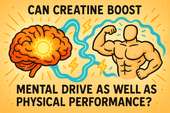
Can Creatine Boost Mental Drive as Well as Physical Performance?
IQ, or intelligence quotient, measures more than problem-solving — it reflects how efficiently your brain processes, adapts, and connects ideas 🧠⚡. While genetics play a role, lifestyle, nutrition, and brain health all influence cognitive performance. Learn how to support mental sharpness and cognitive growth naturally. 🌿✨
-
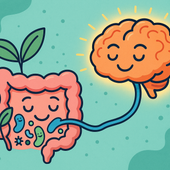
The Link Between Gut Health and Motivation: Probiotics Explained
Serotonin — the “feel-good” neurotransmitter 🌞 — plays a powerful role in mood, motivation, and overall emotional balance. Produced mostly in the gut, it connects digestion, happiness, and focus through the gut-brain axis. Learn how to naturally support serotonin for calmer energy and lasting motivation. 🌿✨
-
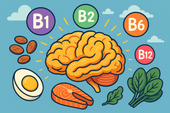
How B Vitamins Fuel Motivation and Energy at the Cellular Level
B vitamins are the body’s natural energy engines ⚡. They convert food into fuel, support dopamine for motivation, and power brain cells at the mitochondrial level. From B1 to B12, these nutrients help you stay focused, resilient, and full of drive — every single day. 🌿🧠
-
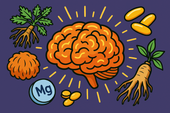
Supplements That Support Mental Endurance for Long Projects
Mindset is more than motivation — it’s the mental framework that shapes how you respond to challenges and pursue goals 🌿🧠. A growth mindset turns obstacles into opportunities, while a fixed mindset fuels self-doubt. Learn the science behind mental resilience and how to cultivate a mindset that sustains focus, creativity, and long-term success. ✨
-
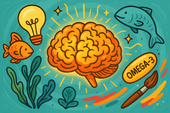
How Omega-3s Influence Drive, Creativity, and Problem-Solving
Sleep isn’t just rest — it’s the foundation of mental clarity, emotional balance, and motivation 🌙💤. During deep sleep, your brain resets stress hormones, consolidates memory, and clears away mental fog. Learn how better sleep supports neuroplasticity, creativity, and lasting energy for your day. 🌿✨
-
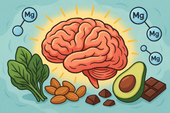
Can Magnesium Improve Your Focus and Motivation?
Caffeine is the world’s favorite stimulant ☕ — boosting alertness, sharpening focus, and lifting motivation within minutes. But there’s real science behind that morning cup. Learn how caffeine works on adenosine and dopamine, how to avoid the crash, and how to use it strategically for sustained energy and mental performance. ⚡🧠
-
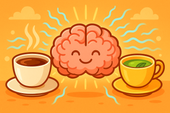
The Role of L-Theanine and Caffeine in Daily Motivation
Cortisol — often called the “stress hormone” — is both your alarm system and your reset button ⚡. It keeps you alert in the morning and helps you recover after challenges, but when it stays high too long, it drains your mood and energy. Learn how to balance cortisol naturally for steady focus, calm, and motivation. 🌿
-
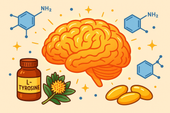
Supplements That Support Dopamine for Drive and Reward
Curcumin — the golden compound in turmeric — is more than a spice 🌿✨. It’s a powerful anti-inflammatory that protects dopamine neurons, supports brain clarity, and enhances mood. Learn how curcumin’s antioxidant properties help stabilize energy, reduce brain fog, and promote emotional resilience naturally. 🌼
-
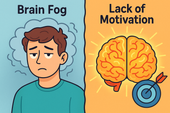
Brain Fog vs Lack of Motivation: What’s Really Holding You Back?
Hormones are the body’s invisible messengers — shaping energy, mood, focus, and motivation 🧠🌿. When they’re balanced, you feel clear, confident, and emotionally steady. Learn how key hormones like cortisol, serotonin, dopamine, and estrogen interact to influence your mental well-being and what you can do to keep them in harmony naturally. ✨
-
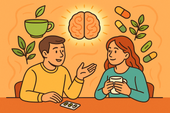
Supplements for Staying Collected During Disagreements
Science helps us understand why we feel, react, and change 🌿🧠. From brain chemistry to neurotransmitters and hormones, every emotional response has a biological root. Explore how research in neuroscience and psychology reveals practical ways to stay balanced, focused, and emotionally strong in daily life. 🔬✨
-

Managing Anger While Traveling
Supplements can help calm your nervous system and keep your emotions balanced while on the go 🌿. From magnesium and ashwagandha to L-theanine and omega-3s, learn how natural nutrients support stress resilience, focus, and emotional control — even through long flights, delays, and unpredictable travel days. ✈️
-

How to Keep Your Temper in Online Debates
Supplements can do more than fill nutritional gaps — they can help balance your energy, focus, and stress response naturally 🌿. From adaptogens to amino acids, the right nutrients support your brain chemistry and hormonal harmony for calm, steady productivity. Discover how supplements can build long-term resilience without the crash. ⚡🧠
-

Supplements to Stay Calm Before Public Speaking
Breathwork is one of the simplest yet most powerful tools for calming pre-performance stress 🌬️. By slowing and deepening your breathing, you lower cortisol, steady your heartbeat, and re-center your mind. Learn the science behind how controlled breathing activates your parasympathetic nervous system — helping you speak, perform, or focus with grounded confidence. 🌿
-

How to Handle Customer Service Stress Without Losing Your Cool 💬🧘♀️
Customer service can test even the calmest person’s patience. 😤 Learn how to handle difficult clients and daily pressure without losing your cool — through better mindset management, calming breathwork, and practical communication tools. Stay grounded, protect your energy, and transform stress into strength. 🌿
-
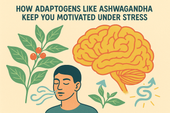
How Adaptogens Like Ashwagandha Keep You Motivated Under Stress
Feeling overwhelmed and unmotivated? 🌿 Discover how adaptogens like Ashwagandha can help you stay centered, focused, and energized under stress. Learn how supplements, breathwork, and therapy work together to restore your natural motivation and help you thrive — even during life’s toughest moments. 💪✨
-
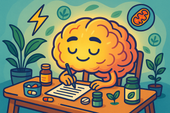
Supplements That Support Long-Term Productivity Without the Crash ⚡🌿
Cortisol — your body’s main stress hormone — can be both your best friend and worst enemy. ⚡ When balanced, it keeps you focused, energized, and ready to act. But when it stays high for too long, it leads to fatigue, anxiety, and emotional crashes. Learn how to regulate cortisol naturally through supplements, sleep, and stress management to maintain calm, steady productivity. 🌿
-
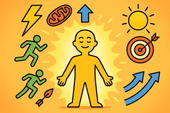
Why Energy Levels and Motivation Go Hand in Hand ⚡🧠
B-vitamins are the brain’s spark plugs 🔋. They turn food into fuel, support neurotransmitter production, and keep your mood, energy, and focus balanced. Learn how vitamins like B6, B9, and B12 work together to power the nervous system, reduce fatigue, and keep motivation high. 🌿
-
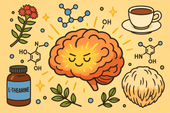
The Science of Motivation: Can Nootropics Help You Stay Focused? 🧠⚡
Nootropics are nature’s tools for sharper thinking and sustainable focus 🧠🌿. From Rhodiola and Lion’s Mane to L-theanine and Bacopa, these brain-boosting compounds enhance motivation, memory, and stress resilience. Learn the science behind how nootropics work — and how to use them safely for peak mental performance and clarity. ⚡
-
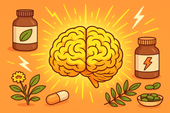
How Natural Supplements Can Boost Your Daily Drive
Cortisol is your body’s main stress hormone — powerful, necessary, but often misunderstood. ⚡ When balanced, it keeps you alert and energized; when chronically elevated, it drains mood, motivation, and focus. Learn how to regulate cortisol naturally through nutrition, supplements, and calming lifestyle habits for steady energy and emotional balance. 🌿
-
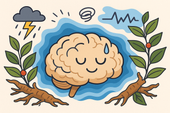
Ashwagandha for Stress and Low Mood
Breathwork is more than a relaxation tool — it’s a way to rewire your nervous system. 🌬️ Through intentional breathing, you can reduce stress hormones, improve focus, and calm emotional turbulence. This guide explores the science of breathwork and its powerful effects on mental clarity, resilience, and emotional regulation. 🌿
-
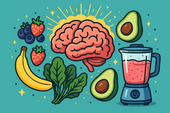
Mood-Boosting Smoothie Recipes
Your blood sugar affects far more than energy — it influences mood, focus, and emotional stability too 🍎. Learn how maintaining balanced glucose levels supports brain health, reduces anxiety, and prevents emotional crashes. Discover the foods and habits that keep your mind calm and your energy steady throughout the day. 🌿
-
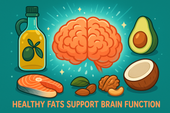
How Healthy Fats Support Brain Function
Your brain thrives on healthy fats 🧠💧. From omega-3s to MCTs, the right fats enhance focus, memory, and mood while protecting against inflammation and aging. This article explores how good fats — like those from olive oil, salmon, avocado, and nuts — build sharper thinking, emotional balance, and lasting brain vitality. 🌿
-
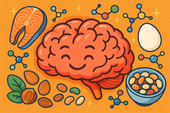
The Role of Protein in Mental Clarity
Protein isn’t just for muscles — it’s for your mind. 🧠 This guide explores how amino acids from high-quality protein fuel neurotransmitters, stabilize mood, and sharpen focus. Learn how balanced protein intake supports dopamine, serotonin, and energy regulation to boost mental clarity and emotional stability naturally. 🍳🌿


















































